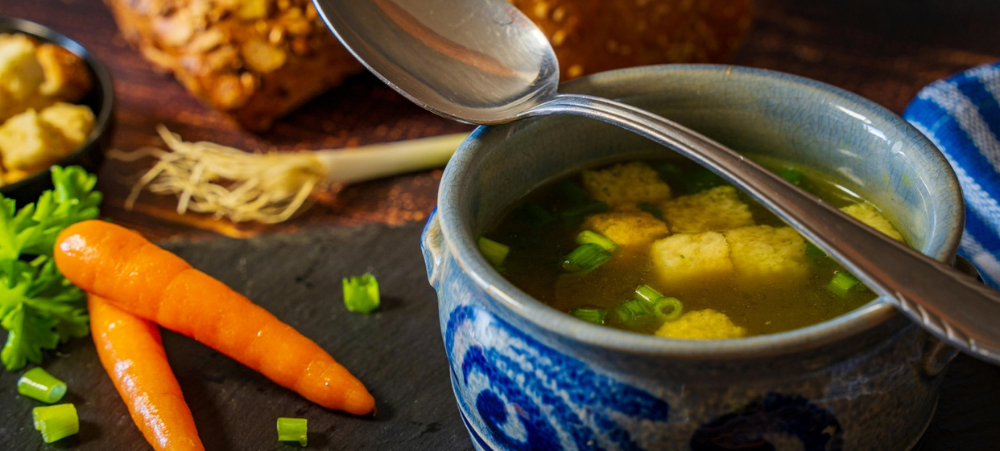Whether it was in an advert, through a doctor, via a pharmacist or in a book, by now you would have heard that fibre is one of the most important nutrients we need in our diets. A lack of fibre can lead to a host of digestive (and other) problems, so it’s important to ensure you get your daily required amount. But did you know that fibre is not just essential for adults? Children, toddlers and babies are extremely reliant on it, as it keeps their bowel movements regular. Let’s take a look at what exactly fibre is, and why it’s so good for you, at every stage of your life.
Dietary fibre comes from plants: think fruits, vegetables, grains, legumes, beans, nuts and seeds. Diets higher in fibre can help lower cholesterol, control blood sugar, maintain bowel health, manage constipation and help promote a healthy weight. In fact, in epidemiological studies, populations with higher dietary fibre intakes tend to have lower chronic disease rates overall. A higher fibre intake provided by foods like fruits, vegetables, legumes, and whole- and high-fibre grain products is likely to be lower in calories, fat and added sugar.
There are two categories of dietary fibre: soluble and insoluble. Most plant foods contain both types. Soluble fibre dissolves in liquid and forms a gel in our stomachs, so it can bind fats and can help reduce cholesterol. It can also slow down the absorption of sugars, helping normalise blood sugar. Good sources include oat bran, barley, peas and beans, nuts, seeds, and most fruits and vegetables. In addition to oat bran, psyllium husks and chia seeds are especially high in soluble fibre—if you’ve ever stirred them into a liquid, you know just how gelatinous they get!
Insoluble fibre, on the other hand, doesn’t dissolve in liquid but will actually absorb liquid, so it adds bulk to stool and helps keep digestive waste moving along. Good sources include wheat bran, whole grains, nuts, beans and vegetables.
Both soluble and insoluble fibre are considered together in dietary fibre recommendations. Your daily recommendations for adequate intake of dietary fibre vary by age, gender and life stage. While these recommendations apply to most people, if you have certain digestive or bowel disorders (either acute or chronic), your healthcare provider might have asked you to reduce the amount of fibre in your diet.
- Children 1 – 3 years require 19 g
- Children 4 – 8 years require 25 g
- Girls 9 – 13 years require 26 g
- Boys 9 – 13 years require 31 g
- Adolescent girls 14 – 18 years require 26 g
- Women 19 – 30 years require 25 g
- Men 19 – 30 years require 38 g
- Women 31 – 50 years require 25 g
- Men 31 – 50 years require 38 g
- Women 50 – 70+ years require 21 g
- Men 50 – 70+ years require 30 g
- Pregnant women require 28 g
Note that the fibre requirements for babies under 1 year are not well studied.
Fibre is particularly important during pregnancy and postpartum when constipation can be a common complaint. In addition to dietary sources, fibre supplementation may be very useful.
What can you expect from a diet high in fibre?
Normal and healthy bowel movements
Dietary fibre increases the weight of the stool while also softening it. This makes it easier to pass, and lessens the chances of constipation. Fibre may help solidify loose stools because it absorbs water. Having enough of it in your diet will keep you “regular” and ensure healthy bowel movements. It also aids the long-term health of the colon. A high fibre diet reduces the risk of developing colorectal cancer and also lowers the risk of haemorrhoids.
It helps maintain a healthy weight
Foods that are high in fibre are usually healthier food options as they are whole foods and fresh foods. They are unrefined and unprocessed, and usually free from added sugars, salts and preservatives. High fibre foods are more filling than low fibre foods, which means you’ll eat less calories, but stay fuller for longer. A great example of this is bread. Have you ever noticed how a slice of high fibre, low-GI bread keeps you feeling fuller for much longer than a slice of refined white bread?
It maintains healthy cholesterol
Certain soluble fibre foods help lower the body’s total blood cholesterol levels by lowering low-density lipoprotein, also known as “bad” cholesterol levels. These foods include oat bran, flaxseed, oats and beans. Fibre aids a healthy heart too by reducing blood pressure and inflammation.
It lowers blood sugar levels
Those with diabetes will be happy to learn that eating lots of high fibre foods (particularly soluble fibre) can help slow down the body’s absorption of sugar and improve blood sugar levels. A diet high in insoluble fibre may also help prevent the risk of developing type 2 diabetes.
It improves your overall health
There are so many studies showing that a high fibre diet contributes to overall better health and a longer life. Not only does it help reduce fatality from cardiovascular disease but it also protects from cancer.
Why is fibre so important for babies and tots?
Just like adults and children, babies and tots are at risk of developing constipation if they do not consume enough fibre. Babies that are exclusively breast-fed do not generally have a problem with constipation, as breastmilk provides adequate fluids to aid the digestive system. However, once solid foods are introduced at around six months, parents should ensure their baby drinks enough water to aid digestion, and should transition them to high fibre foods as soon as possible. Fruit and vegetables are a great place to start.
As soon as baby starts weaning, it is crucial to increase their water intake. To make this easier, always offer water as a first choice for quenching their thirst. Make it more enticing by offering them water in playful and colourful sippy cups, or add in a piece of cucumber, some chopped strawberries or some mint leaves for flavour.
How can I get my young child to eat more high fibre foods?
It is not unusual for children to be picky eaters, but there is a lot that parents can do to ensure that they get enough fibre. The earlier you introduce fibre-rich foods, the easier it will be in the long run to get your kids to eat fibrous food. You can introduce them to high fibre options like sweet potato and other veggies very early on, from around six months. This allows them to get acquired with the taste and texture early on.
Offer babies and young children as big a variety of fibre-rich foods as possible. The more they can get used to, the better. Offer them plenty of fresh fruits with their skins on (think apples, pears, peaches etc) and plenty of raw veggies with healthy dips such as yoghurt or hummus.
Other options include granola and fruit bars, but be careful with these – many of them are loaded with sugar, so best check the label carefully, or better yet, make your own at home.
If you’re struggling with a picky eater, don’t despair. There are many ways to offer them healthier choices without them even realising. Replace regular pasta at home with whole grain pastas and make brown rice instead of white. Make sure that you only have brown, whole wheat or low GI breads on offer. Start your kids off on brown bread early on so that they don’t miss refined sliced white bread, as this has very little nutritional value. If your child has a favourite cereal and won’t try anything else, mix their cereal with a high fibre cereal (about 50-50) or mix it with some sliced fruit or seeds.
What to do when your child wants a snack? Offer them unsalted nuts, fruit or popcorn instead of sweets, chips, biscuits or bread.
How to ensure you get enough fibre
Eat a variety of fruits, vegetables, legumes and whole grains as part of a healthy diet.
Talk to your healthcare provider about how to increase your dietary fibre intake if necessary.
Incorporate more wholesome foods like whole grains, legumes, fruits and vegetables in your diet and avoid refined foods as far as possible. These are not only higher in fibre, but they are also more nutrient-dense than their refined counterparts.
Include whole plant foods when introducing solid foods to your baby.
Introduce your baby to fruits, vegetables, legumes and grains (in appropriate textures for your baby’s development) as part of a varied, healthy, high fibre diet. Talk to your paediatrician about how much fibre is right for your child.
Consider fibre supplementation as needed. If you need fibre supplementation because you are experiencing constipation or because softer stools would be of great benefit (such as if you are postpartum and recovering from a C-section or repair of an episiotomy or tear), you have options.
Fibre supplements include psyllium, methylcellulose, and wheat dextrin. You can also simply add wheat bran, oat bran or ground flax seeds to your salads, oatmeal or smoothies.
Always consult with your healthcare provider before taking anything new.
Drink enough fluids, but try to avoid sugary drinks, and be conservative when it comes to fruit juices and caffeine. Plenty of water and herbal teas are a great choice.
While increasing fibre is normally a good thing, not increasing your water intake at the same time may lead to constipation. So be sure to drink plenty of fluids to stay hydrated as well as keep your bowels moving regularly. Aim for six to eight tall glasses of water a day.
Now that you know the importance of ensuring that your and your children or babies’ diets are rich in both soluble and insoluble fibre, it’s time to incorporate some more high-fibre foods into your meal plan. Each parent and child is different, so we recommend getting in touch with your paediatrician or healthcare provider if you’re uncertain about anything related to your child or baby’s diet.
- Why vitamin D matters for babies, tots and mothers - April 25, 2023
- Why fiber is essential to every diet - April 19, 2023
- TRANSITIONING TO A NEW NAP PATTERN - March 8, 2021





